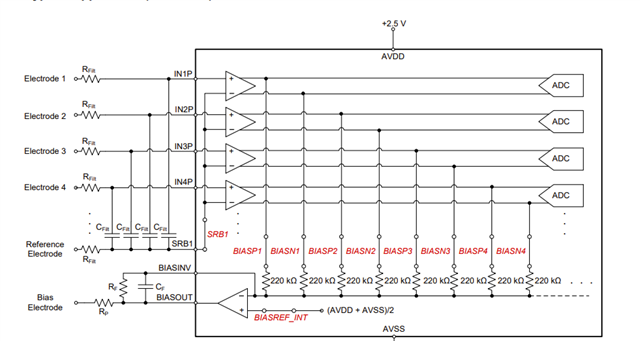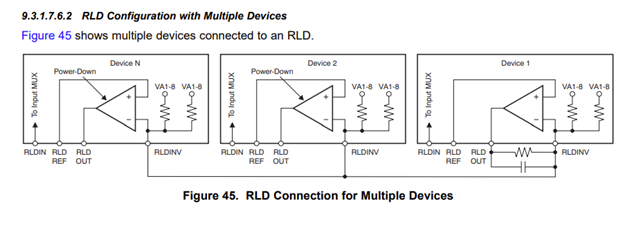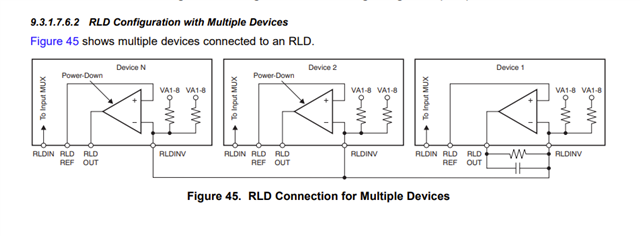Other Parts Discussed in Thread: OPA170, ADS1299
Hi all,
First off, thanks for the support - I have found this forum to be very helpful when I have general questions about TI products. I am designing for a wireless EEG application, and am looking at using the ADS1298 (or 1296) as my converter. I had a few questions about signal conditioning on the front end of the system:
- The head electrodes will mate almost directly with a PCB, which will have about 3-4" of trace length/routing to get to the ADS1298. I was wondering if there would be any benefit to adding a buffer interfacing at the electrode/PCB mating point to drive the short trace run prior to hitting the input stage of the 1298? T he general idea was to use something like an OPA170 at the electrode attach with a low impedance output driving the IN-P stage for each channel. I know the data sheet for the 1299 suggests there is no need for any intermediary circuitry, but I wasn't sure if the same general design approach can be used for the 1298.
- We are planning on using a single-ended approach, with a common reference electrode connected to all of the IN-N inputs. I am going on a design note in the 1299 datasheet for "referential montage" (shown below) connected to SRB In our case, we would just be connecting to IN-N of each channel, but including the differential capacitor for anti-aliasing, whilst keeping CMRR in a decent place. Does this also make sense for the 1298?

- This application will use two 1298's - One one each side of the head (around the temple area). I noticed that there is an short mention of multiple devices with one RLD, and was wondering if I need to pay attention to this. Currently, the plan was to use the internal RLD closed loop feeding the bias electrode on one side of the head, and have the common reference electrode on the opposite side temple. The idea is that we can set the common mode with one ADS1298, and use the reference on the other 1298 to feed both chips. Is there an error in this approach, and should I think about doing this differently? How would the below image be used with multiple 1298's (what is the application?)





